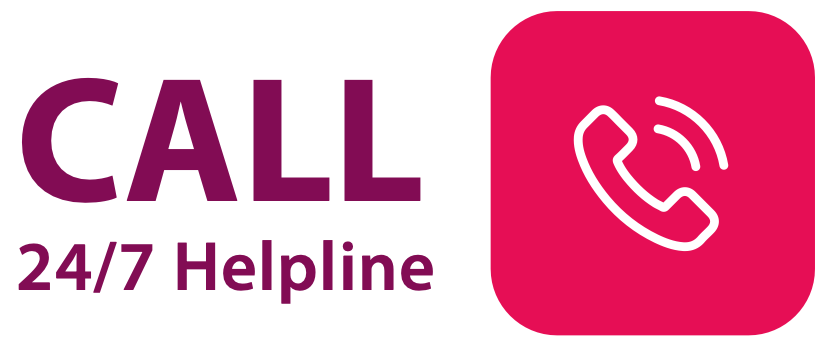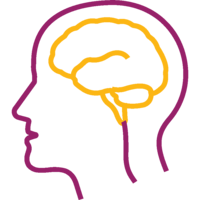
Monday, 24 June, 2024
Welcome to our comprehensive guide on recognising and treating heart emergencies!
Whether you're experiencing symptoms yourself or want to be prepared to help someone in need, this blog is here to provide clarity and actionable steps.
From understanding the differences between cardiac arrest and heart attack to learning what to do during a heart emergency, Kauvery Hospital, one of the best heart hospitals in Bangalore, got you covered.
Let's dive in and empower ourselves to respond effectively in critical situations.
A heart emergency refers to a critical medical situation involving the heart or blood vessels that requires immediate attention and intervention to prevent serious complications or death.
This can include conditions such as cardiac arrest, heart attack, severe arrhythmias, or exacerbations of heart failure. In a heart emergency, every second counts, and prompt recognition and treatment are crucial for improving outcomes and saving lives.
If you or someone else experiences symptoms of a heart emergency, it's essential to seek emergency medical assistance immediately by calling emergency services and following any instructions provided by trained professionals.
Types of Cardiac Emergencies
First things first, let's understand the two main types of cardiac emergencies: sudden cardiac arrest and heart attack.
Sudden Cardiac Arrest vs Heart Attack
Understanding the distinction between cardiac arrest and heart attack is crucial for prompt intervention. Let’s begin by differentiating between cardiac arrest and heart attack, the two major kinds of heart emergency conditions.
- Cardiac arrest occurs when the heart suddenly stops beating, while a heart attack happens when blood flow to the heart is blocked.
- Cardiac arrest is a medical emergency requiring immediate CPR and defibrillation, while a heart attack requires timely medical intervention to restore blood flow to the heart.
Here are the key differences at a glance.
| Aspect | Cardiac Arrest | Heart Attack |
|---|---|---|
| Definition | Sudden loss of heart function, typically due to an electrical disturbance in the heart causing it to stop pumping blood effectively. | Occurs when blood flow to part of the heart muscle is blocked, usually by a blood clot or plaque buildup in a coronary artery. |
| Cause | Electrical disturbances (arrhythmias) such as ventricular fibrillation or ventricular tachycardia. | Blockage in one or more coronary arteries deprives the heart muscle of oxygen and nutrients. |
| Symptoms | Sudden loss of consciousness, no pulse, no breathing, and may include gasping for air or abnormal breathing sounds. | Chest pain or discomfort, shortness of breath, nausea, lightheadedness, sweating, discomfort in other areas of the upper body (such as the arms, back, neck, jaw, or stomach). |
| Treatment | Immediate CPR (cardiopulmonary resuscitation) followed by defibrillation to restore a normal heart rhythm. | Emergency medical treatment often includes medications, clot-busting drugs (thrombolytics), and procedures such as angioplasty and stent placement to restore blood flow to the heart. |
| Prognosis | Survival depends on receiving immediate CPR and defibrillation. Without prompt intervention, it can be fatal within minutes. | Prompt treatment can prevent or limit damage to the heart muscle. However, delay in treatment increases the risk of complications and death. |
| Risk Factors | Previous cardiac arrest, coronary artery disease, heart attack, heart failure, family history of sudden cardiac death, drug abuse, electrolyte imbalances, and certain medications. | Coronary artery disease, smoking, high blood pressure, high cholesterol, obesity, diabetes, sedentary lifestyle, family history of heart disease, and older age. |
Symptoms of Heart Attack
The symptoms of a heart attack can vary, but common signs include:
- chest pain or discomfort
- shortness of breath
- nausea
- lightheadedness
If you or someone you know experiences these symptoms, don't wait – seek help immediately from the best cardiologists in Bangalore!
Golden Hour Heart Attack: Emergency Treatment of Heart Attack
During a heart attack, the first hour, often called the ‘golden hour,’ is crucial. Emergency treatment, such as administering aspirin and nitroglycerin, can help restore blood flow to the heart and minimise damage. The definitive treatment involves opening the occluded artery to restore the blood supply. Traditionally, this was via a strong clot busting injection called thrombolysis. However, thrombolysis is effective in roughly 50-70% of patients. The gold standard treatment for heart attack now is Primary Angioplasty. The success rate of this procedure is close to 95% and if undertaken within the golden period (less than 6 hours since the heart attack) results in complete recovery with very minimal residual heart damage.
Why the First Hour Matters: Importance of Timely Intervention
Time is of the essence during a heart emergency and congestive heart failure. The sooner medical help is sought, the better the chances of survival and recovery. Don't hesitate to call emergency services if you suspect a heart problem.
What if the Patient is Not Breathing?
If someone is not breathing or unconscious, start CPR immediately. CPR can help keep blood flowing to vital organs until medical help arrives. Remember: even if you're not trained in CPR, doing something is better than doing nothing.
The Role of Angioplasty: Swift Resolution for Heart Attacks
Angioplasty procedure, a method to open blocked arteries, is often performed during a heart attack to restore blood flow. This swift intervention can save lives and prevent further damage to the heart. Primary angioplasty has revolutionized the treatment of heart attacks and more than 90% of patients make very good recovery and have an almost normal quality of life. Most patients get back to work in 4 weeks and to full fitness levels in 6-8 weeks.
Steps to Reduce Risk Factors
Prevention is key when it comes to heart health.
Here are a few simple hacks that can help reduce the risk factors of a heart emergency.
- Maintain a healthy diet, rich in fruits, vegetables, whole grains, and lean proteins.
- Stay physically active with regular exercise, aiming for at least 30 minutes most days of the week.
- Maintain a healthy weight by balancing calorie intake with physical activity.
- Manage stress through relaxation techniques such as meditation, yoga, or deep breathing exercises.
- Avoid smoking and limit alcohol consumption
- Keep blood pressure, cholesterol, and blood sugar levels under control through regular monitoring and, if necessary, medication.
- Follow your doctor's recommendations for any prescribed medications or treatments to manage underlying conditions such as hypertension, diabetes, or high cholesterol.
- Stay informed about your family history of heart disease and discuss any genetic risk factors with your healthcare provider.
By incorporating these steps into your lifestyle, you can help reduce your risk of experiencing a heart emergency and promote overall heart health. Remember, small changes can make a big difference in protecting your heart for years to come!
Conclusion
In a nutshell, knowing how to respond to a heart emergency can make all the difference. Stay informed about the signs and symptoms of heart problems, and don't hesitate to seek help if needed. Remember, it's better to be safe than sorry when it comes to matters of the heart. Take care of yourself and your loved ones – you never know when you might need to spring into action!
Key Takeaways
- Understand the difference between sudden cardiac arrest and a heart attack, as prompt recognition is key to appropriate treatment.
- Recognise the symptoms of a heart attack, such as chest pain, shortness of breath, nausea, and lightheadedness, and seek immediate medical help if you or someone else experiences them.
- Act swiftly during a heart emergency, especially during the ‘golden hour’ of a heart attack, as timely intervention can significantly improve outcomes and save lives.
- Remember the importance of CPR if someone is not breathing or unconscious, as it helps maintain blood flow until medical assistance arrives.
- Take proactive steps to reduce risk factors for heart emergencies, including maintaining a healthy lifestyle, managing stress, avoiding smoking and excessive alcohol consumption, and keeping chronic conditions like hypertension and diabetes under control.
Author by Dr. Gnanadev N C
Consultant - Cardiology
MBBS MD DNB
Kauvery Hospital - Electronic City


 Neurosciences
Neurosciences Bariatric Surgery
Bariatric Surgery